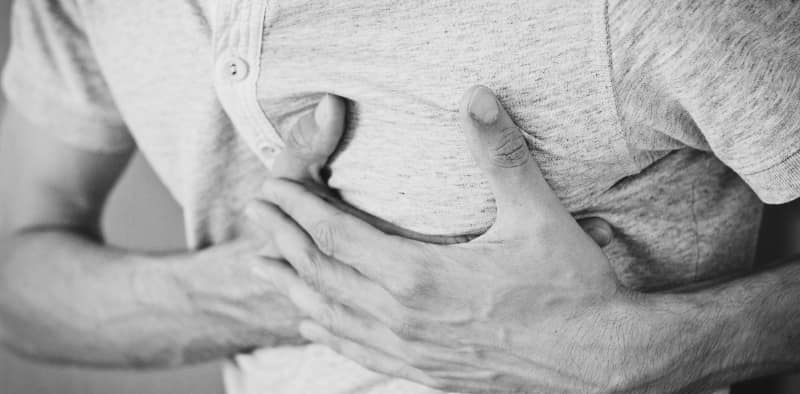Alcohol is a popular substance used by millions worldwide and used by some as a “social lubricant” to feel more confident, reduce inhibitions, energize them, and make them feel more talkative in social situations.
Because it produce these stimulating effects, many people wonder, Is alcohol a stimulant? But they only last a short time. Alcohol is actually a depressant, which slows activity in the brain and the body. This article reviews alcohol’s effects and gets into deeper information about potential risks, such as increasing the chance of alcohol use disorder.
Depressants vs. Stimulants
Depressants and stimulants affect the central nervous system (CNS) in different ways. Stimulants increase activity in the central nervous system [5] and activate dopamine (the “feel good” hormone) and other neurotransmitters in the brain [12], which elevate heart rate and blood pressure, and increase energy, alertness, and attention.
Stimulants are used recreationally and medically. The most commonly used stimulant is caffeine, which is found in many different foods and drinks, like coffee, tea, and chocolate. Many people drink coffee to feel more awake and alert.
There are both legal and illegal stimulant drugs. Doctors prescribe legal stimulant drugs to treat conditions such as narcolepsy, asthma, or Attention deficit hyperactivity disorder (ADHD). [5] Illegal stimulants include drugs like cocaine and methamphetamine.
Again, is alcohol a stimulant? The answer is no. It is a depressant.
Depressants block the neurotransmitter (a chemical in the brain) gamma-aminobutyric acid (GABA). GABA decreases brain activity, slows the heart rate and blood pressure, and produces side effects like relaxation, drowsiness, slurred speech, reduced inhibition, decreased attention and memory, and problems with balance and coordination. [3,12] Doctors prescribe some depressant medications, like benzodiazepines, to treat medical conditions like insomnia, anxiety, and muscle spasms and prevent seizures [3]. Aside from alcohol, the FDA classifies most depressants as controlled substances. [3]

Is Alcohol a Stimulant: The Biphasic Effect
Alcohol produces a “biphasic,” or two-phase, effect on the brain and body. It can stimulate and sedate [6]. During the first phase, alcohol signals your brain to release dopamine, which makes you feel stimulated or energized [1]. Alcohol can also increase your heart rate, which may cause some individuals to become more aggressive.
Stimulant effects happen when blood alcohol concentration (BAC) approaches 0.05 mg/l, but as more alcohol is consumed and your BAC level increases and reaches 0.08 mg/l, you experience more depressant effects of alcohol [1] like drowsiness, coordination, and motor control and slowed reaction time. This level is when you are considered legally impaired to operate a motor vehicle in most areas of the United States [1].
Once dopamine levels return to normal, you are still left with a depressed system, which may lead you to drink again to get dopamine levels up to feel good. Still, the more you drink, the less effect it has on dopamine receptors, and the brain crave alcohol when you are stressed or anxious.
Factors Influencing Perception
Peer pressure to use alcohol can affect a person’s view and perception of alcohol and its effects. It isn’t always direct and can be indirect pressure; when someone perceives that one or all of their friends are using alcohol, they may feel like they should. [7]
Peer social norms are another type of peer pressure. For example, if someone sees a group of friends hanging out and drinking socially, they may feel pressured to drink, even if no one is placing that pressure on them. [7] According to research, people with certain personality traits may be more vulnerable to peer pressure [4], which can happen to children, teens, and adults [8].
Standard Drink Amounts of Alcohol
According to dietary guidelines, a standard drink serving equals 14 grams (0.6 fl oz) of pure alcohol. [11] The USDA provides guidelines for amounts for other types of alcohol based on fluid ounces and alcohol by volume (ABV) and is as follows:
- 12 fluid ounces of regular beer (5% abv)
- 5 fluid ounces of wine (12% abv)
- 5 fluid ounces of 80-proof distilled spirits (40% abv)[11]
Moderate drinking means drinking 2 drinks or less in a single day for men and 1 drink or less in a single day for women. [11]
Binge drinking is drinking 5 or more drinks for men or 4 or more for women in roughly two hours. [11]
Short-term Health Risks
Drinking excessively, such as binge drinking, increases the risk of developing health problems, conditions, and injuries. The Centers for Disease Control (CDC) list the following short-term and long-term risks:
- Motor vehicle accidents.
- Injuries such as falls, burns, or drownings.
- Violence, such as homicide, sexual assault, suicide, and intimate partner violence
- Alcohol poisoning is a medical emergency from excessively high blood alcohol levels.
- Risky sexual behaviors, including unprotected sex or sex with multiple partners.
- Miscarriage or stillbirth or fetal alcohol spectrum disorders (FASDs) among pregnant women. [2]
Long-term health risks
- High blood pressure, stroke, heart disease, digestive problems, and liver disease.
- Cancer of the breast, mouth, throat, esophagus, liver, rectum, and colon.
- Problems with learning and memory, this includes poor school performance and dementia.
- Mental health problems, including depression and anxiety.
- Problems with family or other relationships, trouble keeping a job, or poor productivity.
- Alcohol dependence, or alcoholism. [2]
Risk Factors
Some people asking if alcohol is a stimulant are at increased risk for alcohol use disorder. Some factors include misusing alcohol, like binge drinking and heavy alcohol use, and these behaviors, over time, increase the risk of AUD [10].
The National Institute on Alcohol Abuse and Alcoholism cites three additional risk factors for AUD:
- Drinking at a young age: A recent national survey reported by the National Institute on Alcohol Abuse and Alcoholism found that adults 26 and older who began drinking before 15 had five times as likely to report having an AUD [10].
- Genetics and Family History of alcohol problems: Genetics and family exposure play a role. Individuals with families with a history of alcohol problems are at a higher risk of developing AUD. [10]
- Mental health conditions and a traumatic history: Many psychiatric conditions, like depression, post-traumatic stress disorder (PTSD), and attention deficit hyperactivity disorder (ADHD), are associated with an increased risk of AUD. People with a history of childhood trauma are also at risk of AUD. [10]
Key Takeaways
- Alcohol is a depressant with stimulant effects. You might feel more confident when you take small amounts, but the feeling won’t last. It can also increase your heart rate and make you more aggressive and impulsive.
- More significant amounts can lead to disorientation, slower reaction times, decreased alertness, blood pressure, and heart rate.
- Alcohol affects everyone differently, and how it affects you is based on your unique body chemistry, the amount you drink, your alcohol tolerance, and your individual health and family history.
- Alcohol is a drug, and drinking responsibly and in moderation is essential to avoid adverse health effects.
Harmful Perception of Alcohol as a Stimulant
While many people mistakenly consider alcohol a stimulant due to its temporary effects of increased sociability and energy, it is, in fact, a depressant that slows down brain activity. Understanding the true nature of alcohol as a depressant rather than a stimulant is vital for making informed decisions about your consumption habits.
If you or someone you know is struggling with alcohol addiction, it’s crucial to seek help immediately. At Heartwood Recovery, we offer comprehensive alcohol addiction treatment programs that include fitness, counseling, and 12-step programs to provide a well-rounded approach to recovery. Don’t let alcohol control your life – regain control and start your journey to a healthier, happier future today. Reach out to Heartwood Recovery’s alcohol rehab in Austin for the support and guidance you need to overcome alcohol addiction and live a life free from its grasp.




